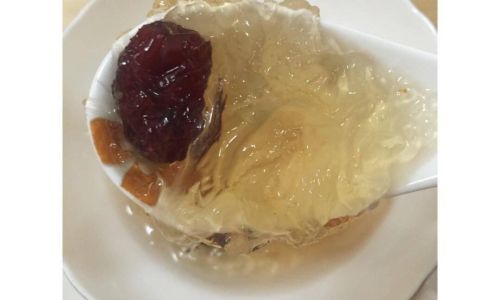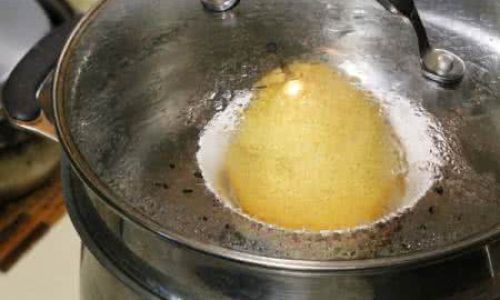Introduction
Edible bird’s nest, a luxury delicacy revered for its nutritional benefits and perceived health advantages, has been a staple in traditional Chinese medicine and cuisine for centuries. Its unique texture and delicate flavor make it a sought-after ingredient in various dishes and remedies. However, storing bird’s nest properly to retain its quality and safety is crucial, especially when considering refrigeration. One common question among bird’s nest consumers is whether the nest should be heated after being stored in the refrigerator. This article delves into the intricacies of storing bird’s nest, the effects of refrigeration, and the necessity of heating it post-refrigeration, providing a comprehensive understanding for those who cherish this exquisite food item.
Understanding Edible Bird’s Nest
Before discussing storage and handling, it’s essential to understand what edible bird’s nest entails. Bird’s nest is primarily made from the salivary secretions of certain swiftlet species, particularly those found in Southeast Asia. These nests are meticulously collected, cleaned, and processed before being sold as a premium food product. They are rich in protein, minerals, and collagen, which are believed to enhance immune function, promote skin health, and provide various other health benefits.
The quality and purity of bird’s nest can vary greatly depending on several factors, including the species of swiftlet, the location of the nest, and the processing methods used. High-quality bird’s nest is typically characterized by its clean appearance, minimal impurities, and a silky, translucent texture.

The Importance of Proper Storage
Proper storage is paramount to preserving the quality, taste, and nutritional value of edible bird’s nest. Improper storage can lead to the growth of bacteria, mold, and other microorganisms, which can compromise the safety and integrity of the product. Additionally, exposure to excessive heat, humidity, and light can degrade the nest’s texture and flavor.
Refrigeration is often recommended as an effective means of extending the shelf life of bird’s nest. By storing it in a cool, dark environment, you can slow down the decomposition process and maintain its freshness for longer periods. However, there are specific guidelines to follow to ensure optimal storage conditions.
Refrigerating Edible Bird’s Nest
When refrigerating bird’s nest, it’s crucial to use an airtight container or a sealed bag to prevent moisture and air from entering. Moisture can cause the nest to deteriorate quickly, while air exposure can lead to oxidation and a loss of flavor. Place the container in the coldest part of the refrigerator, ideally the back or bottom shelf, where temperatures are most consistent.
It’s also important to note that bird’s nest should not be frozen, as this can damage its delicate texture and make it unpalatable. Freezing temperatures cause ice crystals to form, which can disrupt the nest’s structure and make it rubbery or mushy when thawed.

Should Edible Bird’s Nest Be Heated After Refrigeration?
The question of whether to heat bird’s nest after refrigeration is multifaceted and depends on several factors, including personal preference, the intended use of the nest, and the specific type of nest being used.
Texture and Mouthfeel
One of the primary reasons some people choose to heat refrigerated bird’s nest is to restore its texture and mouthfeel. After being chilled, the nest may become firmer and less pliable, which can affect its overall eating experience. Heating the nest gently can help soften it and bring back its silky, smooth texture.
However, it’s essential to avoid overheating, as this can cause the nest to lose its shape and become overly soft or even liquidy. A gentle warm-up, such as placing the nest in a bowl of warm water for a few minutes or using a low heat setting on the stove, is usually sufficient to achieve the desired texture without compromising its structure.
Flavor Enhancement

Heating refrigerated bird’s nest can also enhance its flavor. The chill from refrigeration can sometimes dull the nest’s natural aroma and taste, making it less appealing. Gentle heating can help bring out the nest’s subtle sweetness and umami notes, making it more enjoyable to eat.
Again, it’s important to strike a balance between heating enough to enhance flavor and overheating, which can cause the nest to lose its delicate taste. A quick warm-up, followed by a brief rest, can allow the flavors to develop without overcooking the nest.
Safety Considerations
From a safety standpoint, heating refrigerated bird’s nest is generally not necessary if it has been stored properly and consumed within a reasonable timeframe. Refrigeration itself is an effective means of inhibiting the growth of harmful bacteria and other microorganisms. However, if the nest has been stored for an extended period or if there are any signs of spoilage (such as an off odor or discoloration), it should be discarded immediately.
If you are concerned about the safety of refrigerated bird’s nest, particularly if it has been handled or stored under less-than-ideal conditions, heating it to a safe internal temperature can provide an additional layer of protection. However, this should be done carefully to avoid overcooking and destroying the nest’s nutritional value.
Intended Use

The intended use of the bird’s nest also plays a role in whether it should be heated after refrigeration. If the nest is being used in a dish that requires cooking, such as a soup or dessert, heating it beforehand may not be necessary, as it will be cooked during the preparation process.
On the other hand, if the nest is being consumed raw or as a light snack, heating it gently to restore its texture and flavor may be more appropriate. Ultimately, the decision to heat or not to heat refrigerated bird’s nest should be based on personal preference and the specific context in which it is being used.
Conclusion
In conclusion, whether to heat refrigerated edible bird’s nest is a matter of personal preference, intended use, and the specific circumstances surrounding its storage. Proper refrigeration is essential for preserving the quality and safety of bird’s nest, but gentle heating can enhance its texture, flavor, and overall eating experience. By understanding the nuances of storing and handling bird’s nest, consumers can ensure they enjoy this luxurious delicacy in its best possible form.
When handling refrigerated bird’s nest, always prioritize safety and quality. Use airtight containers, store in the coldest part of the refrigerator, and avoid freezing. If heating is desired, do so gently to avoid overcooking and preserving the nest’s delicate texture and flavor. With these guidelines in mind, you can enjoy the many benefits of edible bird’s nest while ensuring its optimal freshness and safety.





0 comments